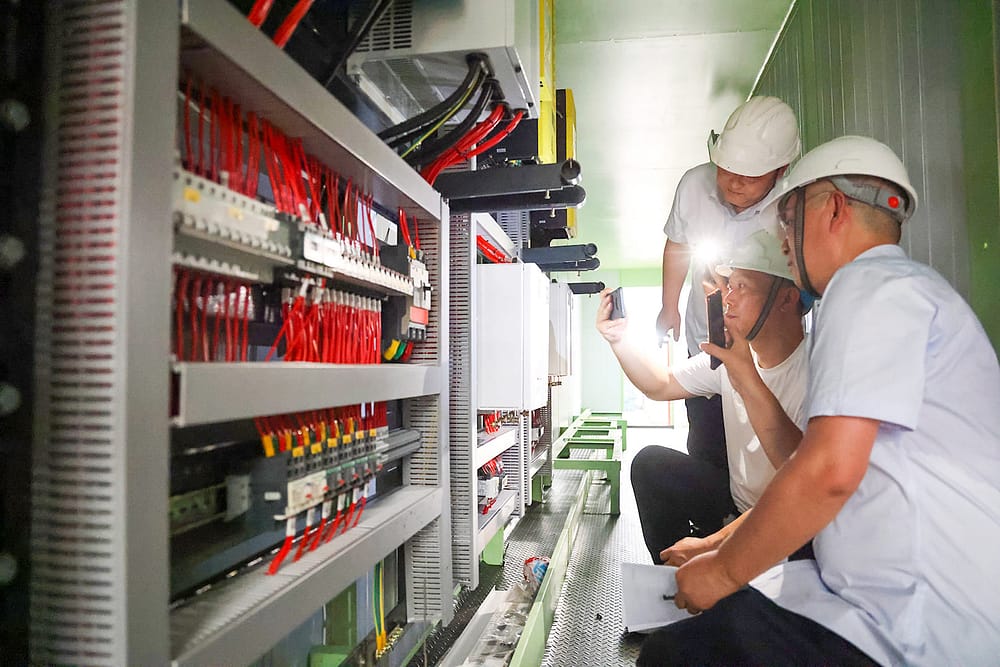Comprehensive assistance in mechanical engineering industry support to address your needs.
Comprehensive assistance in mechanical engineering industry support to address your needs.
Blog Article
Top Tips for Effective Electric System Troubleshooting
Repairing electric systems calls for a systematic technique, grounded in a thorough understanding of electric concepts and safety procedures. The subtleties of efficient repairing prolong past mere technical understanding; recognizing how to document searchings for and focus on safety can considerably affect outcomes.
Understand the Fundamentals
Understanding the fundamentals of electric systems is important for reliable troubleshooting, as a solid structure permits technicians to detect and fix issues extra efficiently. A comprehensive understanding of electrical concepts, such as voltage, existing, resistance, and power, is critical in recognizing the source of problems. Voltage is the electrical possible difference that drives existing via a circuit, while resistance opposes the flow of current, impacting the total capability of the system.
Knowledge with circuit parts, consisting of resistors, capacitors, diodes, and switches, is likewise extremely important. Each component plays a distinct role in circuit behavior and can affect efficiency when malfunctioning. Additionally, understanding series and identical circuit setups is essential, as these setups influence the circulation of voltage and present within the system.
In addition, expertise of safety and security procedures is important. Specialists must know prospective threats, such as shock and short circuits, to carry out risk-free troubleshooting techniques. By mastering these foundational ideas, professionals enhance their ability to conduct reliable diagnostics and repairs, inevitably bring about boosted performance and reliability of electrical systems. This foundational expertise is the foundation of effective fixing endeavors.
Gather Necessary Tools
Effective troubleshooting of electrical systems calls for the appropriate collection of devices to diagnose and fix problems precisely. A well-equipped specialist can substantially enhance effectiveness and effectiveness in determining problems. Important tools consist of a multimeter, which determines voltage, existing, and resistance, permitting specific evaluations of electric parts. Clamp meters are additionally beneficial for measuring present without disconnecting the circuit, making certain security and benefit.
In addition, shielded hand devices such as screwdrivers, pliers, and cord strippers are essential for safely manipulating electric connections. It is additionally advisable to have a circuit tester handy to verify the existence of voltage in outlets and cables. For even more complex systems, a thermal imaging camera can assist identify overheating elements, showing prospective failures.

Adhere To an Organized Method
Having actually collected the appropriate devices, the next action in fixing electric systems is to comply with a methodical approach. A systematic strategy makes certain that technicians discover here can determine faults successfully and properly, decreasing downtime and avoiding unneeded repair work.
Begin by examining the system's schematic diagrams and specs. This includes monitoring each element systematically, beginning from the power source and functioning in the direction of the tons.
Utilize testing tools, such as multimeters and oscilloscopes, to collect objective data regarding voltage, existing, and resistance at different factors within the system. This empirical evidence will lead your troubleshooting initiatives and help to confirm or eliminate potential sources of failing.
Furthermore, consider ecological elements that might influence the system's performance, such as temperature level fluctuations or dampness access. An extensive examination of electrical wiring, connections, and parts will certainly guarantee that all opportunities are accounted for.
Document Your Findings
Complete paperwork is important in the repairing you could try these out procedure of electrical systems. Accurate records boost the efficiency of determining reoccuring problems and promote interaction amongst staff member. Each finding should be diligently kept in mind, consisting of signs observed, tests performed, and the outcomes of those tests. electrical system troubleshooting. This practice not just help in comprehending the root cause of the issue but additionally functions as a recommendation for future troubleshooting initiatives.

In addition, maintaining a log of components replaced or repair work carried out is invaluable. This info supports supply management and can assist evaluate the durability and integrity of particular elements.
Inevitably, the documents process need to be comprehensive yet concise, enabling easy retrieval and evaluation - electrical system troubleshooting. By prioritizing thorough paperwork, service technicians can create a valuable knowledge base that not only aids in existing troubleshooting however likewise encourages future upkeep efforts, therefore enhancing overall system integrity

Prioritize Security Procedures
Identifying the integral dangers related to electrical systems is critical for ensuring security throughout troubleshooting. Electric shock, burns, and devices damage are simply a few of the prospective risks that specialists encounter. Prioritizing precaution is not just a lawful obligation but also an ethical critical that safeguards both the technician and the surrounding environment.
Before beginning any kind of troubleshooting task, specialists ought to wear proper personal safety equipment (PPE), consisting of insulated handwear covers, shatterproof glass, and flame-resistant apparel. Guaranteeing that the workplace is completely dry and devoid of clutter can significantly minimize the risk of accidents. Additionally, it is vital to de-energize circuits before beginning any type of work, validating that they are not live with using a multimeter or voltage tester.
Establishing clear communication methods with employee is also essential; this guarantees that everyone is conscious of prospective threats and the status of the electrical system being dealt with. Finally, having an emergency response strategy in position can prove important in case of a case. By focusing on precaution, technicians can effectively alleviate dangers and promote a safer office.
Conclusion
Effective electric system repairing counts on a detailed understanding of basic principles and a systematic method. Focusing on security procedures ensures the wellness of people included and the stability of the electric system.
Report this page